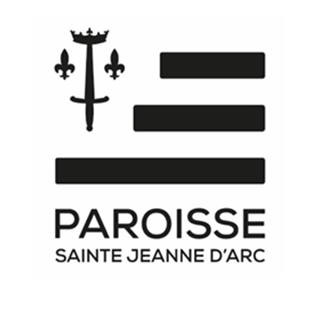Astuces de rédaction
Formats de texte
Filtered HTML
- Les adresses de pages web et de courriels sont transformées en liens automatiquement.
Balises HTML autorisées : <a> <em> <strong> <cite> <blockquote> <code> <ul> <ol> <li> <dl> <dt> <dd>
Ce site autorise le contenu HTML. Si apprendre tout le HTML peut paraître intimidant, apprendre comment utiliser les "balises" HTML les plus simples est très facile. Ce tableau fournit des exemples pour chaque balise autorisée sur ce site.
Pour plus d'information, consultez les spécifications HTML du W3C ou utilisez votre moteur de recherche favori pour trouver d'autres sites explicatifs sur le HTML.
Description de la balise Vous saisissez Vous obtenez Les ancres sont utilisées pour établir des liens vers d'autres pages. <a href="http://jdarc35.org">Paroisse Sainte-Jeanne d'Arc de Rennes</a>Paroisse Sainte-Jeanne d'Arc de Rennes Accentué <em>Accentué</em>Accentué Gras <strong>Gras</strong>Gras Citation <cite>Citation</cite>Citation Citation longue <blockquote>Citation longue</blockquote>Citation longue
Text codé pour afficher du code de programmation <code>Codé</code>CodéListe non ordonnée - utilisez <li> pour débuter chaque élément de la liste <ul> <li>Premier élément</li> <li>Second élément</li> </ul>- Premier élément
- Second élément
Liste ordonnée - utilisez <li> pour débuter chaque élément de la liste <ol> <li>Premier élément</li> <li>Second élément</li> </ol>- Premier élément
- Second élément
Aucune aide n'est fournie pour la balise li. Les listes de définition sont similaires aux autres listes HTML. <dl> délimite la liste de définitions, <dt> délimite le terme à définir <dd> délimite la définition proprement dite. <dl> <dt>Premier terme</dt> <dd>Première définition</dd> <dt>Second terme</dt> <dd>Seconde définition</dd> </dl>- Premier terme
- Première définition
- Second terme
- Seconde définition
Aucune aide n'est fournie pour la balise dt. Aucune aide n'est fournie pour la balise dd. La plupart des caractères non usuels peuvent être saisis sans problème.
En cas de problème, essayez d'utiliser des entités HTML. Un exemple courant est le rendu en & de l'esperluette &. Pour une liste complète des entités, référez-vous à la page des entités HTML. Parmi les caractères disponibles, on trouve :
Description du caractère Vous saisissez Vous obtenez Et commercial && Supérieur >> Inférieur << Marque de citation "" - Les lignes et les paragraphes sont reconnus automatiquement. Les balises <br /> saut de ligne, <p> paragraphe et </p> fin de paragraphe sont insérées automatiquement.Si les paragraphes ne sont pas reconnus ajoutez simplement quelques lignes vides.
You may surround a section of text with "[collapse]" and "[/collapse]" to it into a collapsible section.
You may use "[collapse]" tags within other "[collapse]" tags for nested collapsing sections.
If you start with "[collapsed]" or "[collapse collapsed]", the section will default to a collapsed state.
You may specify a title for the section in two ways. You may add a "title=" parameter to the opening tag, such as "[collapse title=<your title here>]". In this case, you should surround the title with double-quotes. If you need to include double-quotes in the title, use the html entity """. For example: '[collapse title=""Once upon a time""]'. If a title is not specified in the "[collapse]" tag, the title will be taken from the first heading found inside the section. A heading is specified using the "<hX>" html tag, where X is a number from 1-6. The heading will be removed from the section in order to prevent duplication. If a title is not found using these two methods, a default title will be supplied.
For advanced uses, you may also add a "class=" option to specify CSS classes to be added to the section. The CSS classes should be surrounded by double-quotes, and separated by spaces; e.g. '[collapse class="class1 class2"]'.
You may combine these options in (almost) any order. The "collapsed" option should always come first; things will break if it comes after "title=" or "class=". If you need to have it come after the other options, you must specify it as 'collapsed="collapsed"'; e.g. '[collapse title="foo" collapsed="collapsed"]'.
If you wish to put the string "[collapse" into the document, you will need to prefix it with a backslash ("\"). The first backslash before any instance of "[collapse" or "[/collapse" will be removed, all others will remain. Thus, if you want to display "[collapse stuff here", you should enter "\[collapse stuff here". If you wish to display "\[collapse other stuff", you will need to put in "\\[collapse other stuff". If you prefix three backslashes, two will be displayed, etc.
If you prefer, you can use angle brackets ("<>") instead of straight brackets ("[]"). This module will find any instance of "<collapse" and change it to "[collapse" (also fixing the end of the tags and the closing tags).
You may override the settings of the filter on an individual basis using a "[collapse options ...]" tag. The possible options now are 'form="form"' or 'form="noform"', and 'default_title="..."'. For example, '[collapse options form="noform" default_title="Click me!"]'. Only the first options tag will be looked at, and the settings apply for the entire text area, not just the "[collapse]" tags following the options tag. Note that surrounding <p> and <br> tags will be removed.
This module supports some historical variants of the tag as well. The following are not recommended for any new text, but are left in place so that old uses still work. The "class=" option used to called "style=", and "style=" will be changed into "class=". If you don't put a double-quote immediately after "class=", everything up to the end of the tag or the string "title=" will be interpreted as the class string. Similarly, if you don't have a double-quote immediately following "title=", everything up to the end of the tag will be used as the title. Note that in this format, "style=" must precede "title=".
Plain text
- Aucune balise HTML autorisée.
- Les adresses de pages web et de courriels sont transformées en liens automatiquement.
- Les lignes et les paragraphes sont reconnus automatiquement. Les balises <br /> saut de ligne, <p> paragraphe et </p> fin de paragraphe sont insérées automatiquement.Si les paragraphes ne sont pas reconnus ajoutez simplement quelques lignes vides.
